If you have ever appreciated elms blooming then you are more observant than most. I don’t mean the splashes of bright green we see in April before most deciduous trees come into leaf. That is the developing fruit. Elm flowers open in March and sometimes as early as February. They are small clusters of highly reduced flowers that have a red tinge when lit from the right angle. Almost nobody notices them, so don’t expect elm blossom festivals any time soon. Strictly, the word blossom is not correct as it normally applies to fruit trees and some ornamental species, particularly cherries. Cherry blossom festivals in Japan are a big deal and their popularity is spreading.
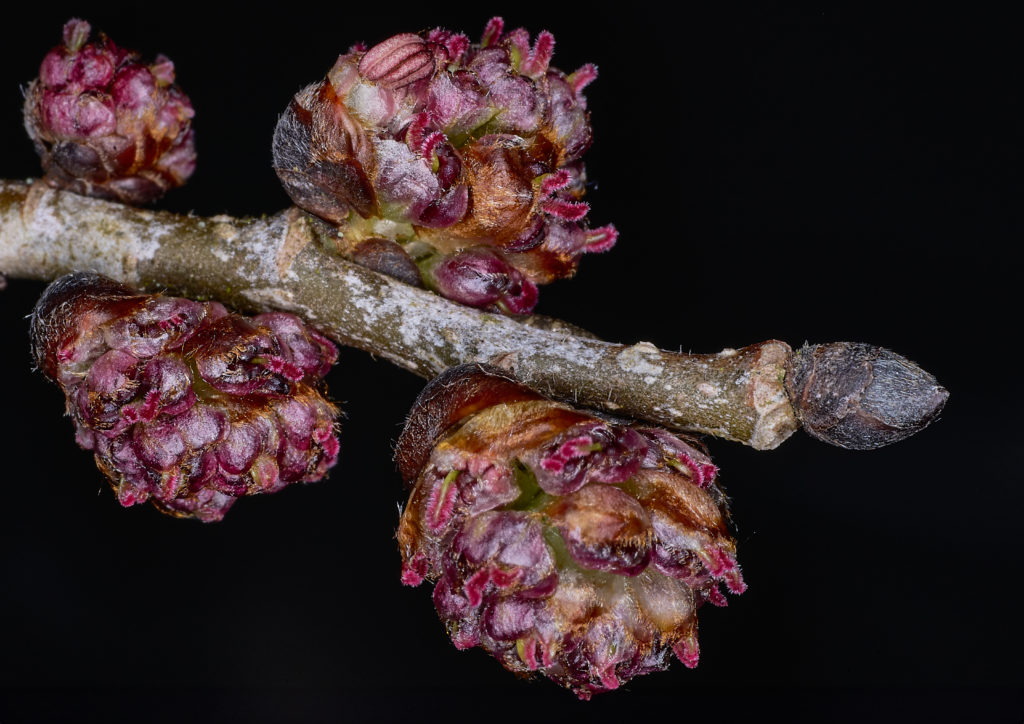
For the Scottish Plant Recovery project team elm blossom time (I’m sticking with it) is a period of great activity. Native wych elm has been devastated by the fungal disease known as Dutch elm disease. The aim of the project is to cross individuals that have shown good resilience by survival over decades in areas of uncontrolled disease. Only the largest elms, over 2m girth, are used in this breeding programme. This is because they have the best track record of survival. We hope that if both parents of the next generation are such promising trees that their good qualities may be passed on and combined. For more background on this process, see a previous post called Next gen elms.
As the elms entered their breeding season in 2024 Emma Beckinsale, project lead horticulturist for woody plants, was standing by to intervene and control the pollination process. This match making is all about timing. The pollen needs to be introduced just as the female parts of the flower are receptive. Thankfully, elms rarely pollinate themselves, so the fiddly job of trying to remove the male parts of the hermaphrodite flower is not necessary. However, it is good to conduct the ‘controlled pollination’ at a point when the female stigmas have just emerged and the male anthers are yet to release any pollen. This way the stigmas are not already covered in unwanted pollen when the pollen of the chosen father is introduced.
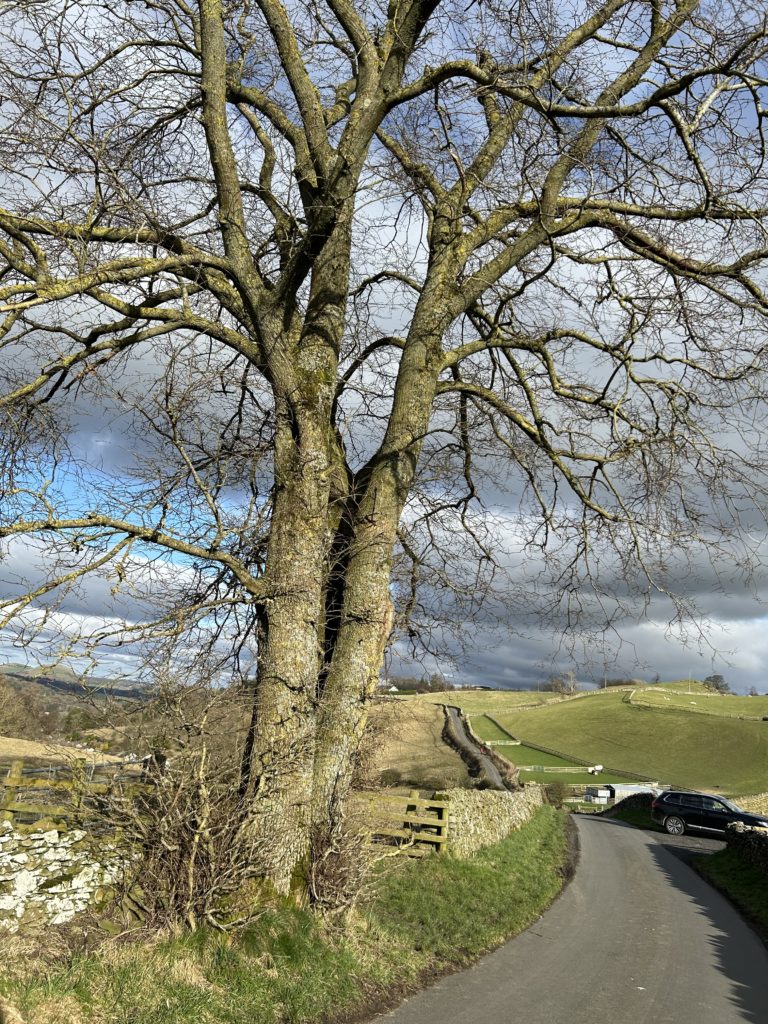
Detailed images of elm flowers, taken this spring, allow us to see the fine details of these wind-pollinated blooms. At higher magnification it is possible to see the colours and structures that are hidden to the naked eye. The stigmas (female) are covered in finger-like projections called papillae that are designed to help the pollen (male) lodge in place as it is blown onto the stigma. The pollen grains are spherical and relatively smooth and produced in vast numbers by the sac-like anthers. Dust-like pollen is transported on the wind, so controlling pollination involves bagging shoots before the emergence of the stigmas.
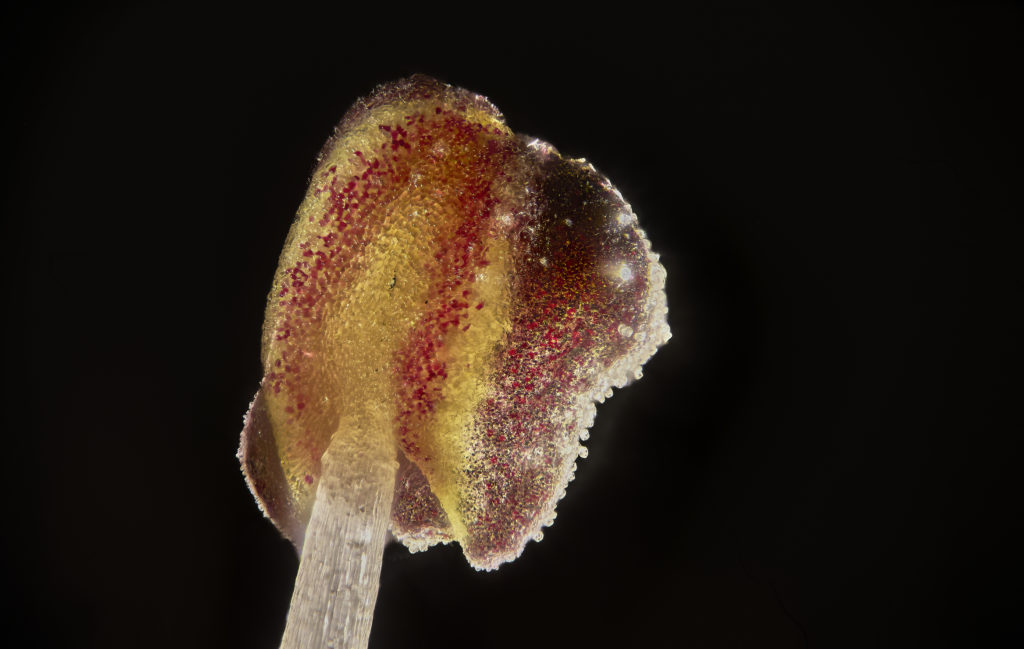

When the flower clusters are at the perfect point for pollination (illustrated in the twig image at the start of this post), with stigmas emerged, the pollen is either introduced into the pollination bag with a ‘puffer’, or the bag is briefly removed and pollen dabbed onto the flowers with a fine paint brush.
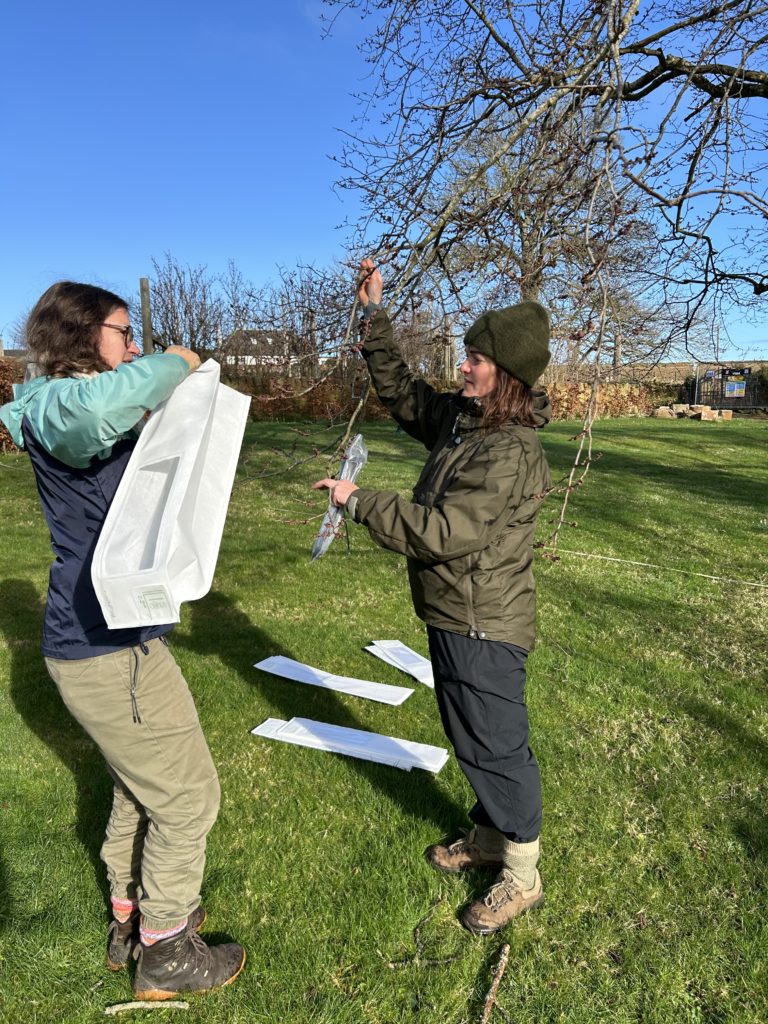
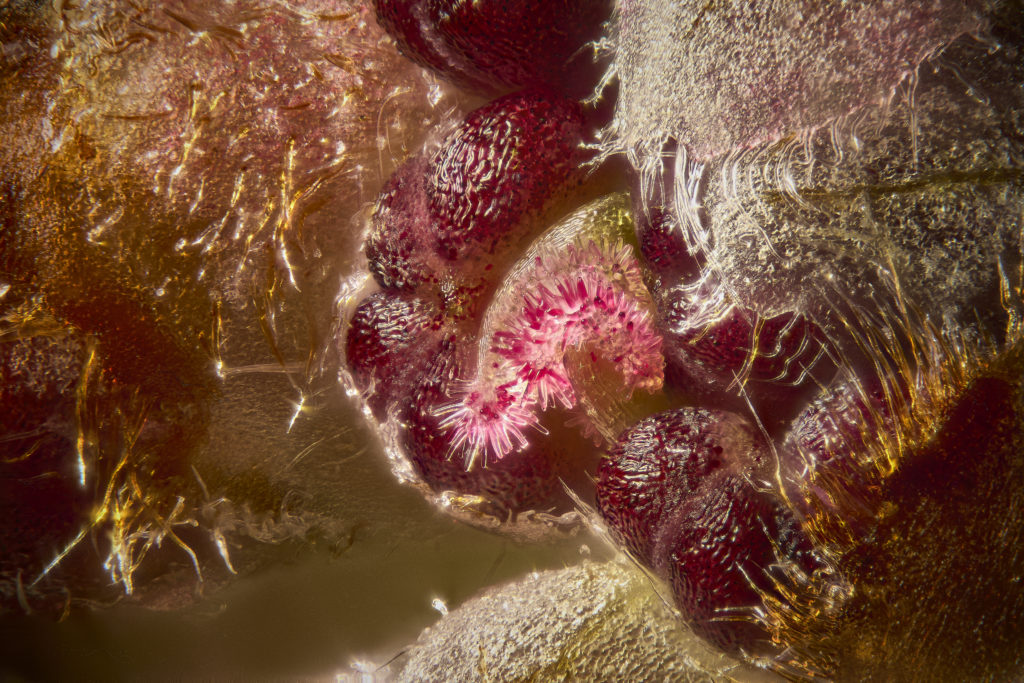
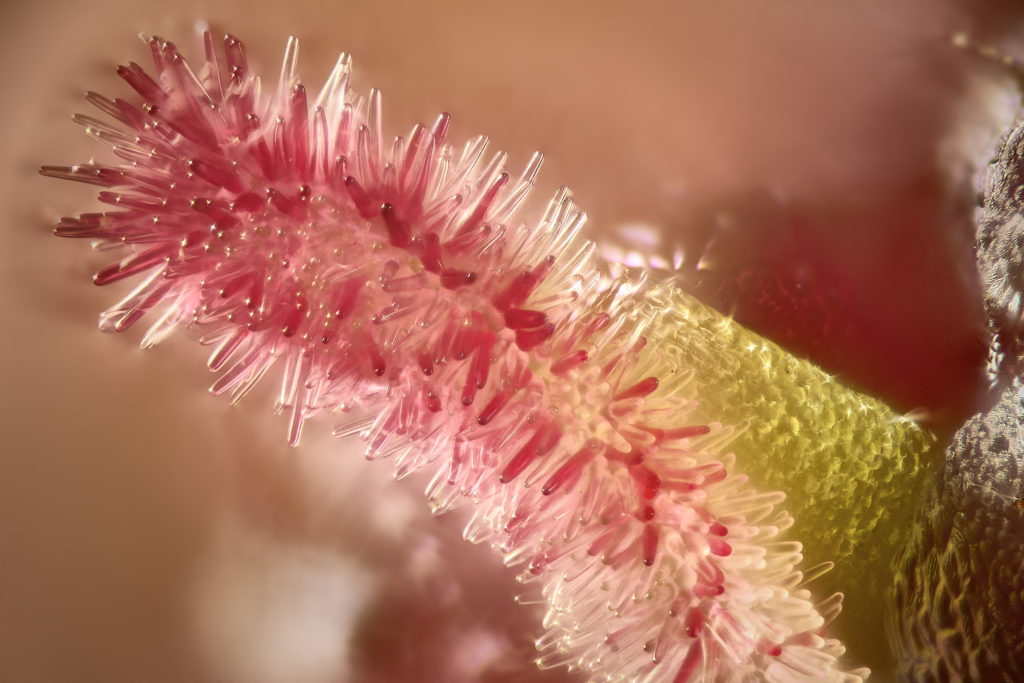
As I write, we are watching and waiting to see if the fruits within the pollination bags develop normally and appear fertile. Elm fruits consist of a small hard seed in the centre of a disk-like papery wing. The whole structure is called a samara and is designed to be transported on the wind.
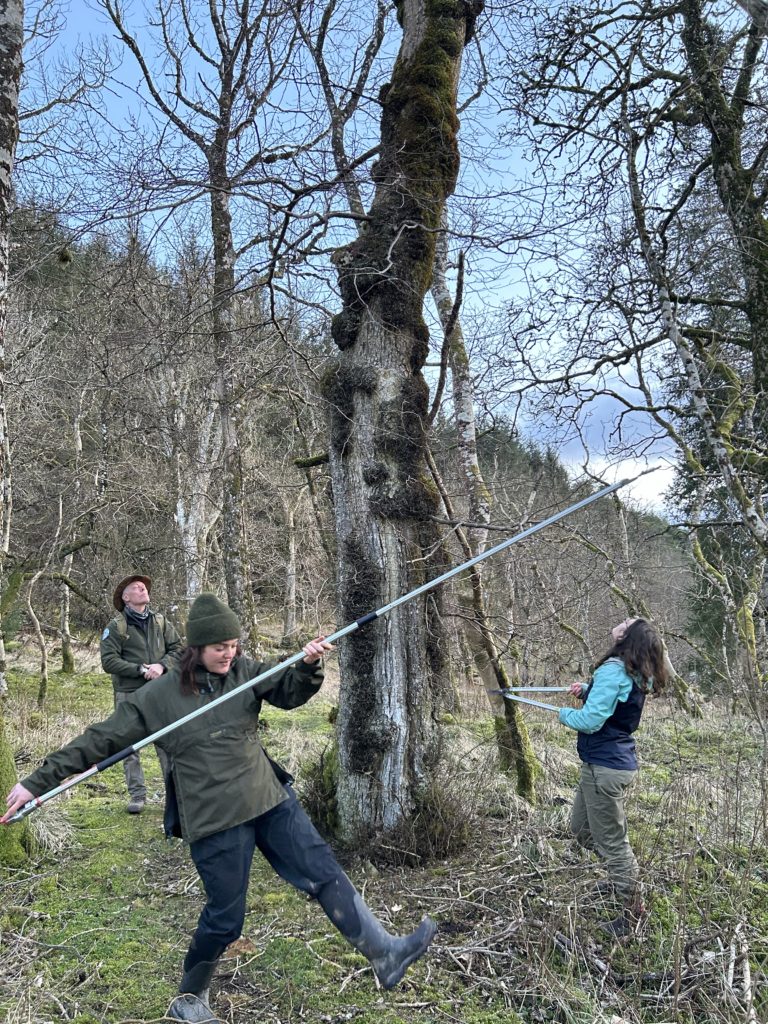
One thing we learnt from the first round of pollinations in 2023 is that the pollination bags do have a couple of disadvantages. They catch the wind and we lost a few branches as a result. They also exclude birds, which it turns out could have eaten the moth caterpillars that ate some of our carefully produced seeds. So, this time around the bags will be removed and only replaced at the final stage of development to avoid the seeds being blown away and lost.
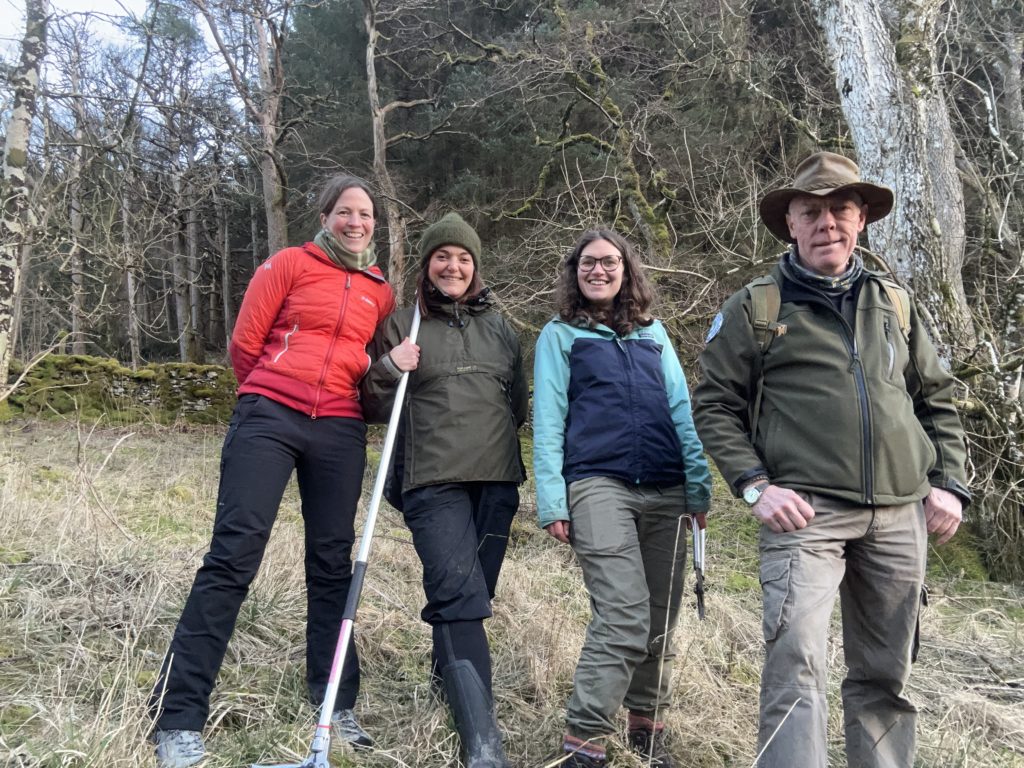


- X @TheBotanics
- X @nature_scot
- X and Facebook @ScotGovNetZero
- Facebook @NatureScot
- #NatureRestorationFund
Acknowledgement: The detailed images of elm flowers have been created by Francis Principe-Gillespie using microphotography. They show wych elm flowers in greater detail than has previously been seen.
